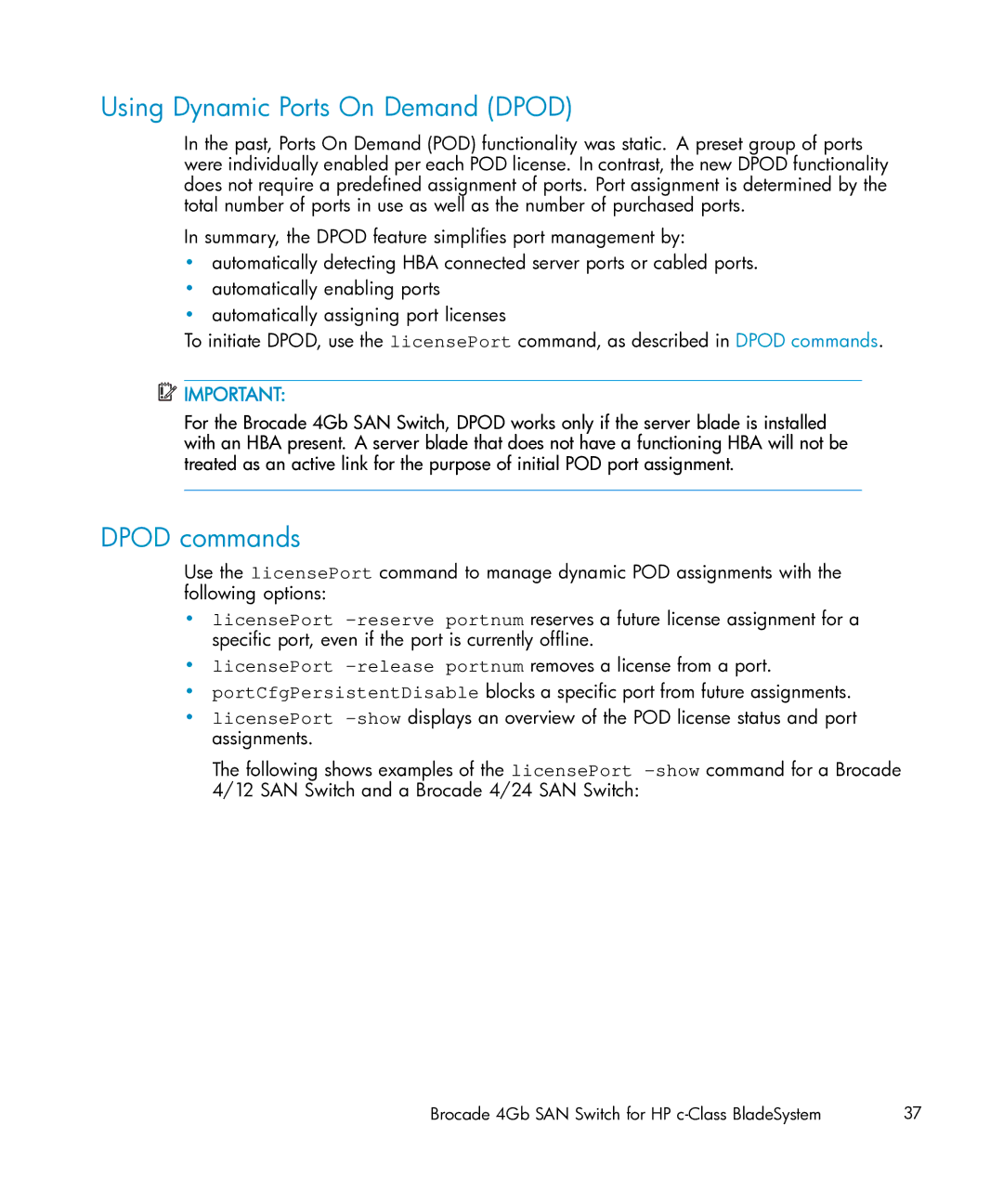
Using Dynamic Ports On Demand (DPOD)
In the past, Ports On Demand (POD) functionality was static. A preset group of ports were individually enabled per each POD license. In contrast, the new DPOD functionality does not require a predefined assignment of ports. Port assignment is determined by the total number of ports in use as well as the number of purchased ports.
In summary, the DPOD feature simplifies port management by:
•automatically detecting HBA connected server ports or cabled ports.
•automatically enabling ports
•automatically assigning port licenses
To initiate DPOD, use the licensePort command, as described in DPOD commands.
![]() IMPORTANT:
IMPORTANT:
For the Brocade 4Gb SAN Switch, DPOD works only if the server blade is installed with an HBA present. A server blade that does not have a functioning HBA will not be treated as an active link for the purpose of initial POD port assignment.
DPOD commands
Use the licensePort command to manage dynamic POD assignments with the following options:
•licensePort
•licensePort
•portCfgPersistentDisable blocks a specific port from future assignments.
•licensePort
The following shows examples of the licensePort
Brocade 4Gb SAN Switch for HP | 37 |
